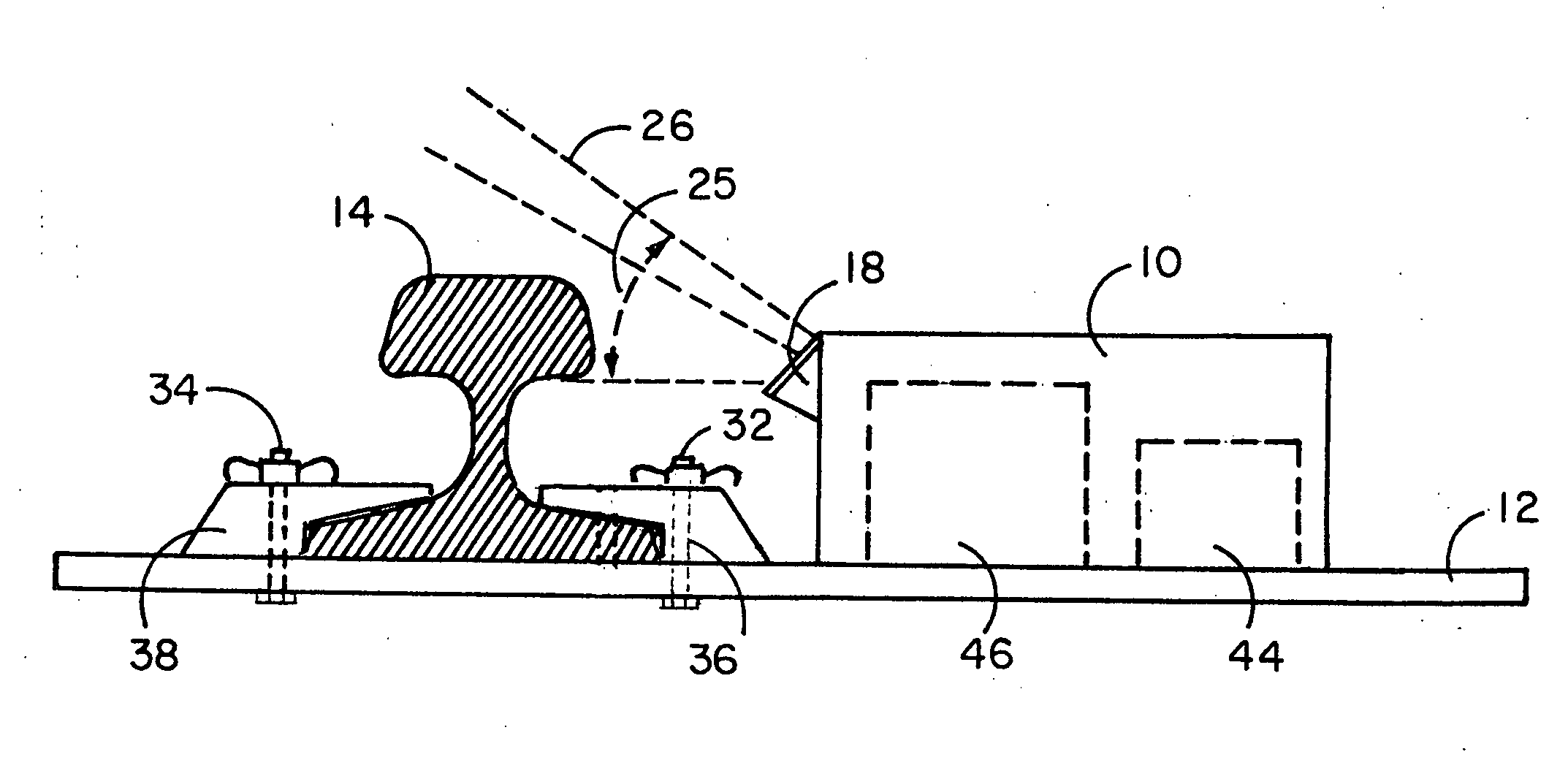Dual ultrasonic train detector
a detector and ultrasonic technology, applied in the direction of railway components, railway signalling, railway signalling and safety, etc., can solve the problems of dual sensor redundancy and incorrect identification of running rails
- Summary
- Abstract
- Description
- Claims
- Application Information
AI Technical Summary
Benefits of technology
Problems solved by technology
Method used
Image
Examples
Embodiment Construction
)
[0013]FIG. 1 illustrates a perspective view of portable train detector 10 of this invention mounted on mounting plate 12. Within mounting plate 12 are defined two parallel elongated first and second slots 28 and 30 which extend to end 64 of mounting plate 12. Mounting plate 12 can be made of a nonconductive material, and it extends under track 14 between first tie 60 and second tie 62. The mounting plate is disposed immediately under the track and clamped thereto to position the portable train detector 10 a selected distance 22 from track 14. When portable train detector 10 is at the desired distance in the range between 0.25-20 inches from track 14, first clamp 36 and second clamp 38, as seen in FIG. 2, are attached, respectively, by first and second bolts 32 and 34, extending through first and second slots 28 and 30, respectively, against one side of the base of track 14 with the second clamp 38 affixed by third and fourth bolts 40 and 42, also passing through first and second sl...
PUM
 Login to View More
Login to View More Abstract
Description
Claims
Application Information
 Login to View More
Login to View More - R&D
- Intellectual Property
- Life Sciences
- Materials
- Tech Scout
- Unparalleled Data Quality
- Higher Quality Content
- 60% Fewer Hallucinations
Browse by: Latest US Patents, China's latest patents, Technical Efficacy Thesaurus, Application Domain, Technology Topic, Popular Technical Reports.
© 2025 PatSnap. All rights reserved.Legal|Privacy policy|Modern Slavery Act Transparency Statement|Sitemap|About US| Contact US: help@patsnap.com



